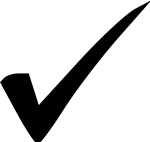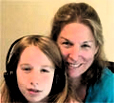 Recently, Ayako Egawa wrote to us from Japan about how teachers in different countries use different symbols to mark right and wrong answers in school. She wrote:
Recently, Ayako Egawa wrote to us from Japan about how teachers in different countries use different symbols to mark right and wrong answers in school. She wrote:
"I enjoy my teaching job and I found an interesting cultural difference between Japan and other countries. It’s about how to mark correct and incorrect answers.
In Japan, ○ (a circle, ‘maru’ in Japanese) means correct. × (a cross, ‘batsu’ in Japanese) means incorrect. It’s our custom.
Recently, I found out where I work that the meanings of a circle and cross are different in other countries. Teachers from the Philippines and England say ○ means incorrect and × means correct."
In the USA, "x" means an answer is wrong and a check mark ✓ or not marking it at all means it’s correct.
I asked Monique Palomares what symbols they use in France. She replied:
"We put an ‘x’ or a check mark ✓ when it’s right and a ‘0’ when it’s wrong."
Ayako wrote about symbols for marking attendance:
"At my work (an English school), teachers write marks on the attendance sheet. Japanese people mark ○ for present and × for absent on the space next to each student’s name. But some foreign teachers mark × for present. It’s confusing remembering what ○ means for foreign teachers in Japan. Teachers from England mark P for present instead of ○ (circle). I found it interesting the difference between Japan and other countries."
Monique wrote from France:
"To mark the attendance sheet, at least in primary school, only absences are marked: a horizontal line means ‘absent in the morning’, a vertical line means ‘absent in the afternoon’, which means that if a pupil misses a whole day, there is a + in the day’s box."
Feel free to share with us how you mark correct or incorrect answers and/or how you mark attendance in your country in the comments below.
Thanks to Ayako and Monique for sharing with us!
Mama Lisa
This article was posted on Monday, November 21st, 2016 at 10:02 pm and is filed under Countries & Cultures, England, France, Japan, Philippines, School, Teaching, USA. You can follow any responses to this entry through the RSS 2.0 feed. You can skip to the end and leave a response. Pinging is currently not allowed.
3 Responses to “How Teachers Mark Correct and Incorrect Answers around the World”
Leave a Reply

























May 18th, 2018 at 9:25 am
Hi Lisa, this is an interesting topic which I accidentally came across and caught my attention. Indeed it is curious why trivial things like these have variations. In the Philippines, it is a common practice to indicate either a circle ○ (i.e., by encircling the item number) or x mark for the wrong answers, and check mark for the right ones. Seldom can you see unmarked correct answers.
May 18th, 2018 at 7:53 pm
That’s interesting Andy!
March 10th, 2022 at 6:05 am
I was intrigued by this topic when I saw a Japanese friends’s son test paper and there were circles used throughout the paper and they would use a tick ✔️ for answers that are wrong and it had me very confused. In the uk, where I grew up, the markings are a little similar to the USA that you have mentioned. Often they will not write anything on the paper if the answers are correct and only circle the wrong answers. I can see how this can a be a problem for foreign teachers in Japan if they are not used to this style of marking.